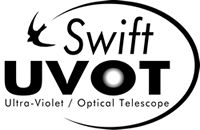
29 May 2002 - MSSL delivers UVOT for NASA's Swift Mission
On Thursday May 30th, a state-of-the-art space telescope designed and built at UCL's Mullard Space Science Laboratory, will be taken on a special United States Air Force flight from RAF Mildenhall to NASA's Goddard Space Flight Center in Maryland, Washington, DC.
Called the UVOT (Ultra-Violet / Optical Telescope), this will be one of three telescopes on a special NASA orbiting space observatory which is planned for launch on a Delta II rocket next year. The observatory, called "Swift", has been specially designed to find gamma-ray bursts.
These are the most explosive events in the Universe but as yet, very little is known about when and why they occur. The most distant burst has been seen in a galaxy about 12 billion light-years away; this explosion went off when the Universe was very young.
Scientists believe that gamma-ray bursts come from the explosions of massive stars, called hypernovae, leaving behind a black hole. Or they may occur when two exotic, very dense stars, called neutron stars, collide. One thing we do know is that if a gamma-ray burst went off in our Galaxy, it would cause mass extinction on the Earth in a matter of seconds, without warning.
The Swift observatory will look into the most distant reaches of the Universe and should find about three bursts a week. Scientists will use this information to find out how, where and when these cataclysmic events will occur - unlocking secrets of the history and the structure of the Universe - and telling us whether we should worry!
|
|
For more information:
http://swift.gsfc.nasa.gov/epo/brochure/sbfront.html
http://swift.gsfc.nasa.gov/resources/multi/
http://www.mssl.ucl.ac.uk/www_astro/swift
http://www.mssl.ucl.ac.uk/www_astro
http://www.mssl.ucl.ac.uk
